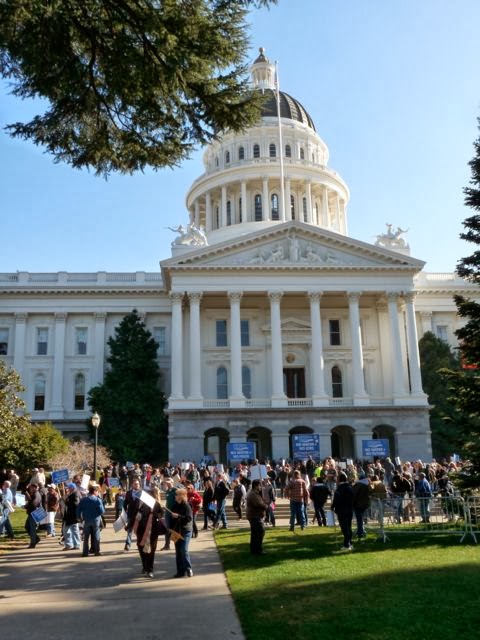FINAL STATE WATER ACTION PLAN RELEASED
Final State Water Action Plan Outlines California’s Near- and Long-Term Water Priorities
As California experiences one of the driest winters on record, TODAY, the California Natural Resources Agency, the California Environmental Protection Agency, and the California Department of Food and Agriculture released the final California Water Action Plan, laying out goals and vision for the next five years. The plan will guide state efforts to enhance water supply reliability, restore damaged and destroyed ecosystems, and improve the resilience of our infrastructure.
At the direction of Gov. Edmund G. Brown Jr., a collaborative effort of state agencies, and nearly 100 substantive public and stakeholder comments formed a plan to set direction for a host of near- and long-term actions on water issues for the state.
“It is a tall order. But it is what we must do to get through this drought and prepare for the next,” said Gov. Brown in his 2014 State of the State address.
The Governor’s proposed 2014-15 budget lays a solid fiscal foundation for implementing near-term actions for the plan, recommending $618.7 million in funding for water efficiency projects, wetland and watershed restoration, groundwater programs, conservation, flood control, and integrated water management.
“As we work on emergency actions to manage through one of the driest winters on record, we are also taking proactive, long-term steps to prepare California for future droughts and flood,” said Secretary for Natural Resources John Laird. “Each decade brings improvements, but also significantly highlights what we can do better. The California Water Action Plan gives us clear focus and vision for the next five years.”
Final revisions to the draft plan, released in October 2013, include an expanded section on drought response and a new effort focused on better management of Sierra Nevada headwaters that helps water storage and quality, and ecosystems. Public comment on the draft plan made it clear that California must better understand the economic and ecological harm of sustained dry weather.
The Governor’s proposed budget would provide $472.5 million in Proposition 84 funds to the Department of Water Resources (DWR) for integrated regional water management. The bond funds would leverage local and federal investment in projects that reduce demand, build supply, and offer additional benefits such as wildlife habitat and flood management. The budget also placed immediate emphasis on water and energy use efficiency and wetlands and coastal watershed restoration to further support the resiliency of water supply and ecosystems during this dry weather period.
The governor’s budget also would allow DWR to better monitor the groundwater resources that provide more than one-third of California’s supplies in dry years, and supports the development of a state backstop for sustainable groundwater management practices by the State Water Resources Control Board, should local efforts to do so not materialize.
“Together, the Governor’s proposed budget and this finalized plan provide the State with practical solutions to the state’s most critical problems; the proposals on groundwater are a good example,” said Cal/EPA Secretary Matt Rodriquez. “Data collection and monitoring are crucial to sustainable management of our unseen but incredibly important aquifers.”
All of the near-and long-term actions in the plan center on sustaining supplies of water for people, the environment, industry and agriculture. This year’s severe dry conditions highlight the stakes. Drought threatens to force the fallowing of hundreds of thousands of acres of farmland, throw thousands of people out of work, and potentially raise supermarket food prices.
“Our severe dry conditions are alarming for California’s agricultural industry,” said California Department of Food and Agriculture Secretary Karen Ross. “In the near term, we must do all we can to keep our fields productive. In the long term, we have a once-in-a-generation opportunity to make the investments that will allow us to stay productive in the face of a changing climate.”
Key actions identified in the Plan include:
- Make conservation a California way of life.
- Increase regional self-reliance and integrated water management across all levels of government.
- Achieve the co-equal goals for the Delta.
- Protect and restore important ecosystems.
- Manage and prepare for dry periods.
- Expand water storage capacity and improve groundwater management.
- Provide safe water for all communities.
- Increase flood protection.
- Increase operational and regulatory efficiency.
- Identify sustainable and integrated financing opportunities.












